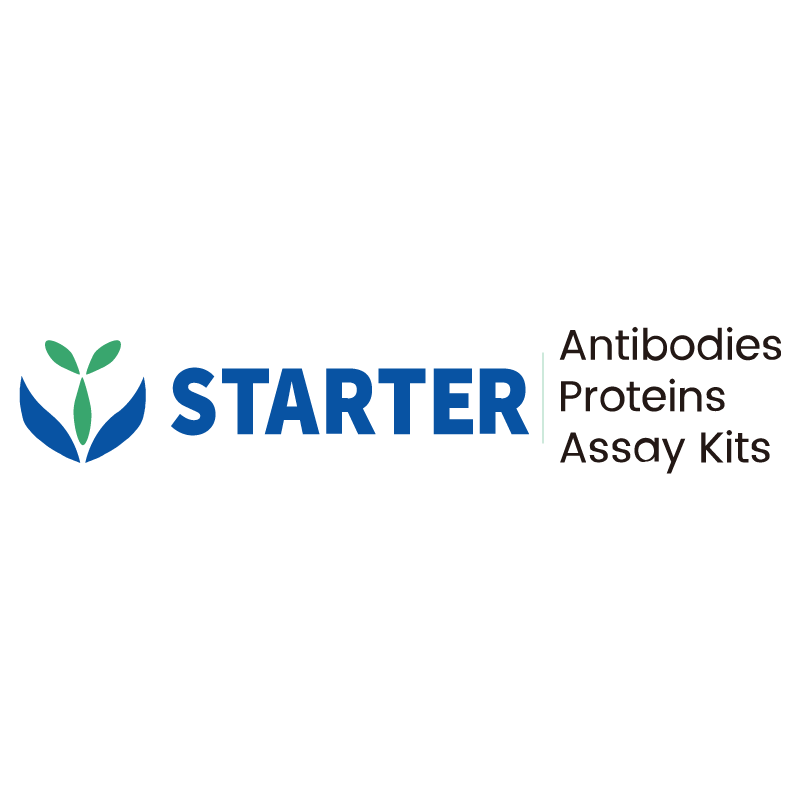WB result of BST2 Recombinant Rabbit mAb
Primary antibody: BST2 Recombinant Rabbit mAb at 1/1000 dilution
Lane 1: RAW264.7 whole cell lysate 20 µg
Secondary antibody: Goat Anti-rabbit IgG, (H+L), HRP conjugated at 1/10000 dilution
Predicted MW: 19 kDa
Observed MW: 20-32 kDa
This blot was developed with high sensitivity substrate
Product Details
Product Details
Product Specification
| Host | Rabbit |
| Antigen | BST2 |
| Synonyms | Bone marrow stromal antigen 2; BST-2; HM1.24 antigen; CD317; Bst2 |
| Immunogen | Synthetic Peptide |
| Location | Cytoplasm, Endosome, Cell membrane |
| Accession | Q8R2Q8 |
| Clone Number | S-1950-247 |
| Antibody Type | Recombinant mAb |
| Isotype | IgG |
| Application | WB, IHC-P, ICC |
| Reactivity | Ms, Rt |
| Positive Sample | RAW264.7 |
| Purification | Protein A |
| Concentration | 2 mg/ml |
| Conjugation | Unconjugated |
| Physical Appearance | Liquid |
| Storage Buffer | PBS, 40% Glycerol, 0.05% BSA, 0.03% Proclin 300 |
| Stability & Storage | 12 months from date of receipt / reconstitution, -20 °C as supplied |
Dilution
| application | dilution | species |
| WB | 1:1000 | Ms |
| IHC-P | 1:250 | Ms, Rt |
| ICC | 1:400 | Ms |
Background
BST2 protein, also known as bone marrow stromal antigen 2 or CD317, is a type of protein that plays significant roles in various biological processes. It is a type II transmembrane protein mainly expressed on the surface of cells such as fibroblasts, endothelial and cells some immune cells. One of its key functions is in the regulation of cell proliferation and differentiation. For example, in the bone marrow microenvironment, BST2 protein can influence the growth and development of hematopoietic cells by interacting with other molecules. Moreover, it is involved in the immune response. It can affect the activation and function of immune cells like T cells and B cells, thus participating in the regulation of the body's immune defense mechanism. Additionally, BST2 protein has been found to be associated with some diseases. Abnormal expression of BST2 protein may be related to the occurrence and development of certain cancers and autoimmune diseases. Therefore, research on BST2 protein is of great importance for understanding the mechanisms of cell biology and disease pathogenesis.
Picture
Picture
Western Blot
Immunohistochemistry
IHC shows positive staining in paraffin-embedded mouse cerebral cortex. Anti-BST2 antibody was used at 1/250 dilution, followed by a HRP Polymer for Mouse & Rabbit IgG (ready to use). Counterstained with hematoxylin. Heat mediated antigen retrieval with Tris/EDTA buffer pH9.0 was performed before commencing with IHC staining protocol.
IHC shows positive staining in paraffin-embedded mouse spleen. Anti-BST2 antibody was used at 1/250 dilution, followed by a HRP Polymer for Mouse & Rabbit IgG (ready to use). Counterstained with hematoxylin. Heat mediated antigen retrieval with Tris/EDTA buffer pH9.0 was performed before commencing with IHC staining protocol.
Negative control: IHC shows negative staining in paraffin-embedded mouse skeletal muscle. Anti-BST2 antibody was used at 1/250 dilution, followed by a HRP Polymer for Mouse & Rabbit IgG (ready to use). Counterstained with hematoxylin. Heat mediated antigen retrieval with Tris/EDTA buffer pH9.0 was performed before commencing with IHC staining protocol.
IHC shows positive staining in paraffin-embedded rat spleen. Anti-BST2 antibody was used at 1/250 dilution, followed by a HRP Polymer for Mouse & Rabbit IgG (ready to use). Counterstained with hematoxylin. Heat mediated antigen retrieval with Tris/EDTA buffer pH9.0 was performed before commencing with IHC staining protocol.
Immunocytochemistry
ICC shows positive staining in Raw264.7 cells. Anti- BST2 antibody was used at 1/400 dilution (Green) and incubated overnight at 4°C. Goat polyclonal Antibody to Rabbit IgG - H&L (Alexa Fluor® 488) was used as secondary antibody at 1/1000 dilution. The cells were fixed with 100% ice-cold methanol and permeabilized with 0.1% PBS-Triton X-100. Nuclei were counterstained with DAPI (Blue). Counterstain with tubulin (Red).


